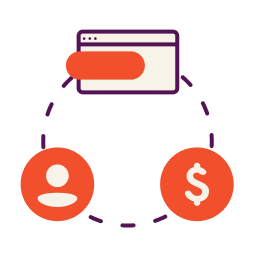Advertiser & Editorial Disclosure
If you’re thinking of flipping houses for profit, you’re entering a lucrative market. According to Attom Data Solutions, U.S. home flipping rates reached a nine-year high in 2019. Over 49,000 homes were flipped in the first quarter of 2019, with an average gross flipping profit of $60,000. That number is a 38.7 percent return on investment compared to the original acquisition price.
Preparing for a big business purchase often includes preparing for a loan application. You can put yourself in the best position possible with Nav’s Business Loan Builder plan. You’ll be able to see where you stand before diving into an application, and even access your FICO SBSS score, which lenders will check if you choose to apply for an SBA 504 loan.
Common Ways To Flip Houses with No Money Down
- Hard Money Loans
- Private Money Lenders
- Wholesaling
- Partner with Flipping Investors
- Home Equity Loan / Home Equity Line of Credit (HELOC)
There’s a lot of money to be made by flipping houses, so why don’t more people do it? Unfortunately, many people think you need hundreds of thousands of dollars saved to become home flippers.
However, that’s not necessarily true. There are plenty of financing options available that make house flipping possible, even if you have no money to put down. Here are five different ways to flip a house with no cash:
1. Hard money loans
A hard money loan is a short-term loan that is secured by real estate used by borrowers to purchase and repair a property with the intention of flipping it. In general, borrowers use hard money loans to purchase, fix up, and resell a property within one year.
Fix-and-flip loans aren’t offered by traditional lenders like banks and credit unions. Instead, they’re offered by alternative lenders that cater to house flippers. Hard money loans are usually easier to get than traditional bank loans, but they often come with higher interest rates, higher fees, and shorter repayment terms. However, you can also get your money faster with a hard money loan, so you can take advantage of a great real estate deal.
When taking out a hard money loan, make sure you pay attention to the rule of 70 percent. The rule of 70 percent is a guideline that says investors should pay 70 percent of the after-repaired value (ARV) of a property, minus the cost of repairs needed.
For example, if you think a property will sell for $200,000 after you’ve completed renovations, and it needs $25,000 in repairs, you should only pay 70 percent of its ARV. 70 percent of $175,000 is $122,500, which is the maximum you should pay for the property.
The 70 percent rule is just a guideline; there may be exceptions to the rule that are still profitable, but keep it in mind to ensure you don’t overspend.
Find an Accountant with 1-800Accountant
2. Private money lenders
If you need help financing a flip, consider private money lenders. Instead of working with a bank, you connect with family, friends, professional connections, and individual investors to get the cash you need.
With private money lenders, there are three degrees of connections:
- Primary circle: Family and close friends
- Secondary circle: Colleagues, professional and personal acquaintances
- Third circle: Accredited investors and hard money lenders
Working with a private money lender can be a win-win situation for everyone. You get the money you need to fund the flip, and your investor gets an investment they can keep track of and reap real results.
When you borrow money from a family member, friend, or acquaintance, it’s important to treat it like a real business transaction. Set a loan amount, interest rate, payment schedule, and create a promissory note that outlines the terms of the loan. You should also get hazard insurance, so the investor gets their money back if something happens to the house.
3. Wholesaling
If you don’t have access to a lot of money, another option is wholesaling, where you act as the middleman. With this strategy, the wholesaler contracts a home — usually one that is distressed or needs significant repairs — with a seller. Then, the wholesaler shops that home to potential buyers, selling them the rights to the contract for a higher price.
The goal is to sell the contract assignment to a new buyer before your contract with the original homeowner closes. That way, no money changes hands, and you don’t have to put up any of your own dollars.
Wholesaling is a great approach if you don’t have a lot of money and you have a decent network of potential buyers lined up. However, the process can be time intensive, and it can be risky. To minimize the risk of losing money, make sure you include a contingency in the contract with your original buyer that allows you to back out of the deal if you can’t find a buyer.
4. Partner with flipping investors
If you don’t have money saved away for a flip, but have significant skills in marketing, selling, or renovating, you may be able to finance your deal by partnering with flipping investors.
When you work with partner investors, the investors — either individuals or real estate investments groups — provide the capital for the flip. While this can be an easy way to get the cash you need, you need to contribute significant value to the partnership in order to get a cut of the profits.
If you pursue this option, make sure you highlight your skills or connections that make your inclusion important.
5. Home equity loan
If you have equity in your own home, it can be a lucrative funding source for your business. With a home equity loan, you can tap into your home’s equity to fund your flip.
A home equity loan is a type of loan that is secured by your house. You can borrow a percentage of your home’s equity — its value minus what you owe on the mortgage. In most cases, you can borrow up to 85 percent of your home’s equity, so if you had a $200,000 home and owed $100,000 on it, you could borrow up to $85,000.
Home equity loans can be an excellent financing option for home flips. Because they’re secured by your house, they tend to offer lower interest rates than other loans, and you can have up to 20 or 30 years to repay the loan, giving you a more affordable monthly payment.
However, you should keep in mind that your house is collateral. If you fall behind on your payments, the bank could foreclose on your home.
Final word
If you’re thinking about becoming a real estate flipper, but lack the money to do it on your own, make sure you research your financing options. There are many investment property loans and investors available that can make your flipping goals a reality.
Before moving forward with any financing approach, make sure you fully evaluate and understand the risks associated with flipping houses. While there is the potential for significant profits, not all flipped houses sell for a profit, and you could lose money.
It’s also a good idea to know your credit score, as many lenders will review your credit before deciding whether or not to issue you a loan. If your credit is less-than-stellar, work on improving your score by paying down your balances and making all of your monthly payments on time.
If you need help understanding your finances and the risks of flipping houses, consult with a financial advisor to see if it makes sense for you. They can even help you create a comprehensive business plan to ensure your real estate investment goals are sound.
This article was originally written on October 28, 2019 and updated on January 31, 2021.




Great article, I’m starting a small business with wholesaling and eventually house flips. Are there any loans or grants available to me as a woman?
Claire – this article may help with your research for grants.
Great information